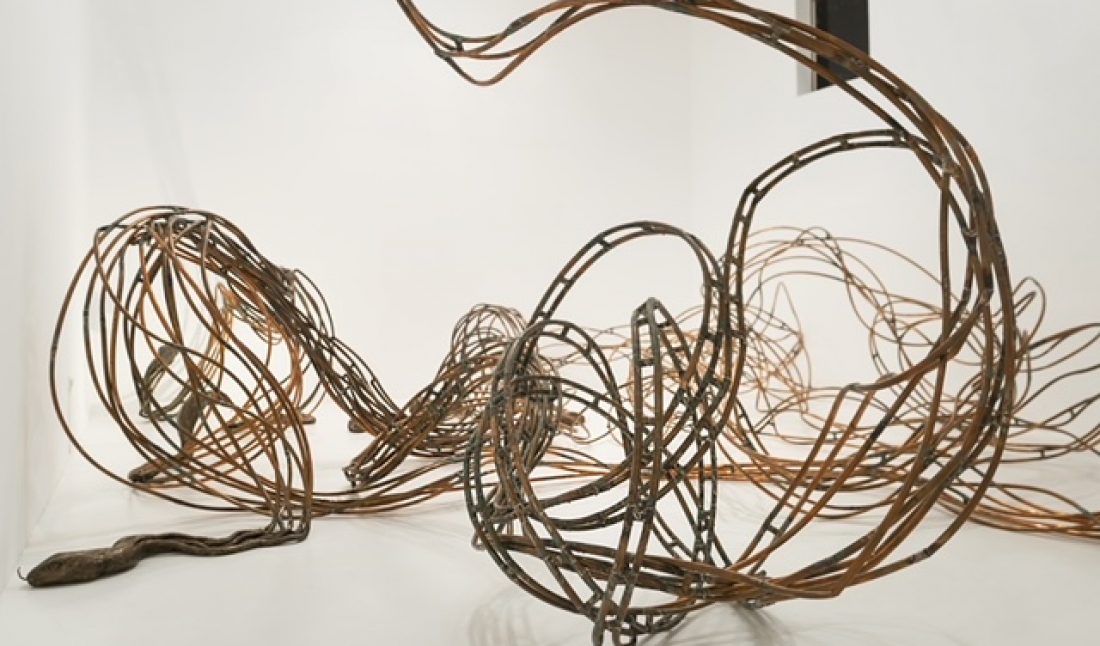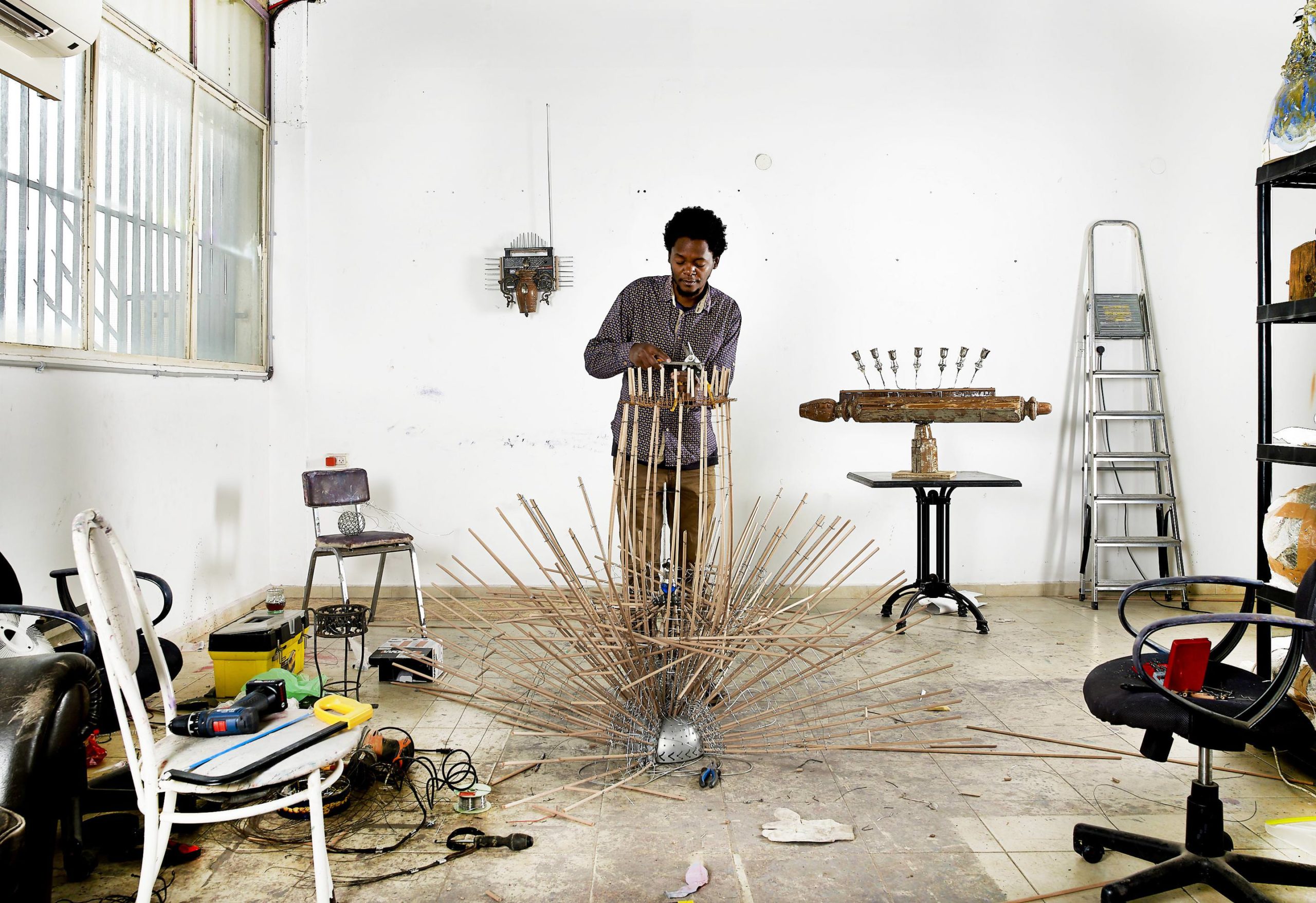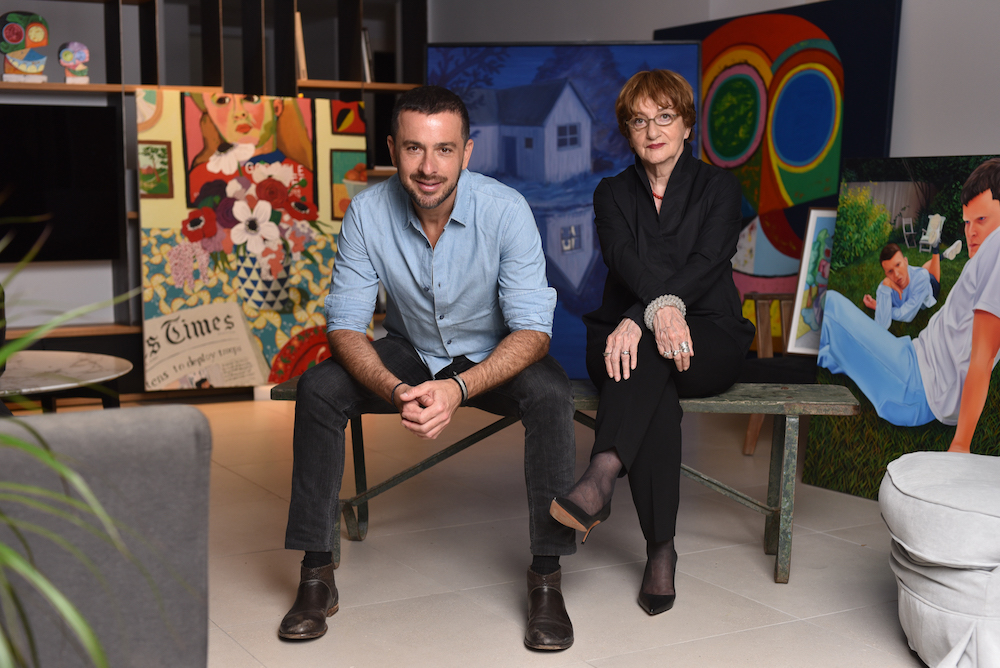The Johannesburg-based multimedia artist Nicholas Hlobo presented “Inyoka Yobhedu,” his first solo exhibition in Israel at CCA Tel Aviv from November 5 to December 31 last year. The show, curated by Tamar Dresdner featured a site-specific installation of copper pipes intertwined and fused with bronze serpent heads. Hlobo considers copper, a natural electrical conductor, a “conduit” between states of being. The serpents evoke the Nehushtan described in the Book of Numbers, a bronze serpent on a pole that God had Moses create so that snake-bitten Israelites who looked at it would heal from their wounds.
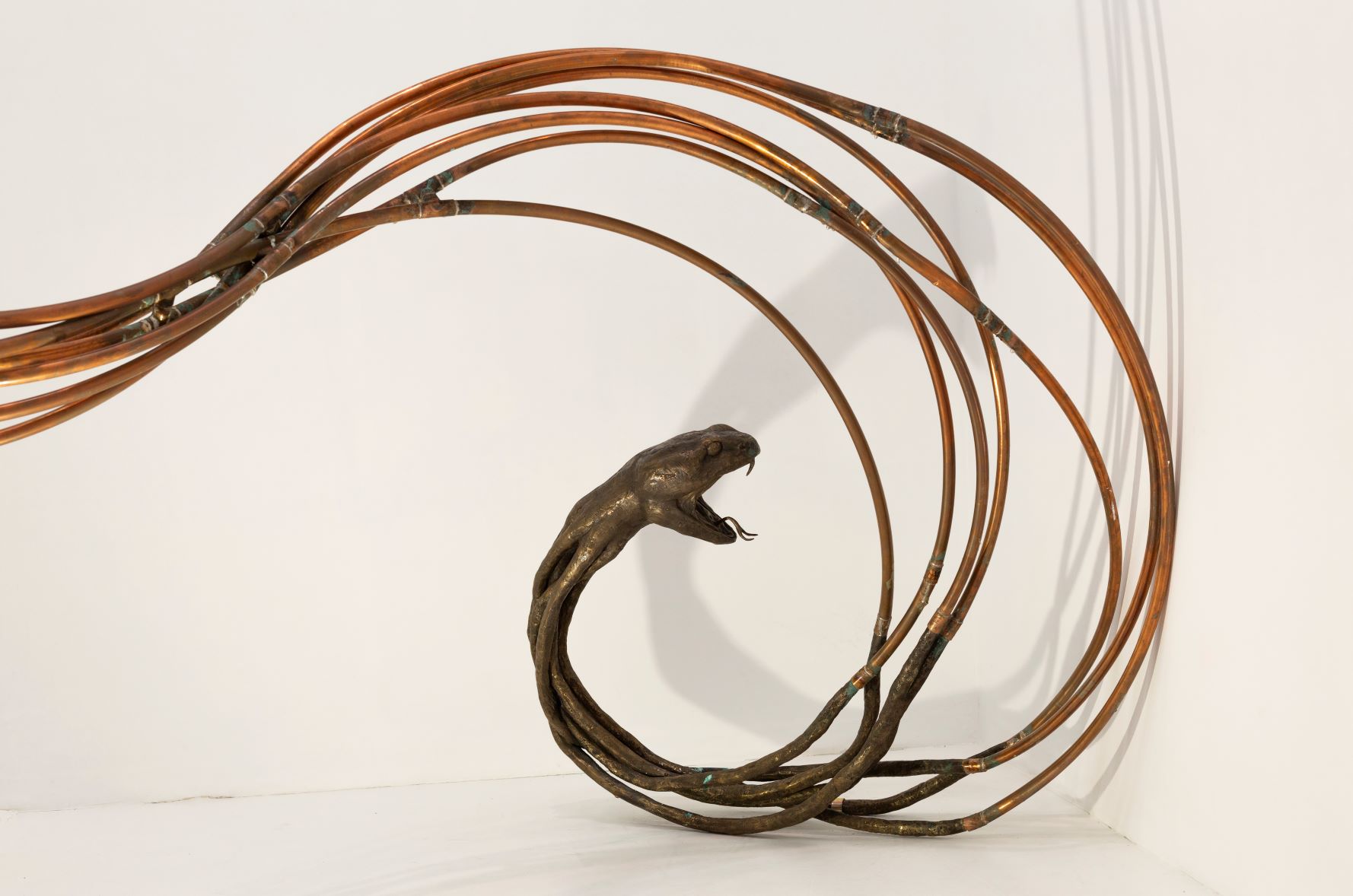 “Inyoka Yobhedu,” Nicholas Hlobo, 2021, photo by Eyal Agivayev, courtesy of CCA Tel Aviv.
“Inyoka Yobhedu,” Nicholas Hlobo, 2021, photo by Eyal Agivayev, courtesy of CCA Tel Aviv.
Hlobo’s works are not only titled in his native language, isiXhosa, but span the indeterminate space of identity and possibility between the Xhosa and Western Christian tradition. In exploring this liminal state of the Xhosa tradition, “Inyoka Yobhedu” compares it to that of the Israelites, further extending this analogy in light of South Africa’s history of apartheid and current struggles and historical tensions in Israel. While in the Abrahamic tradition the serpent represents both healing and deceit or temptation, in the Xhosa tradition it is a bearer of good fortune and new life.
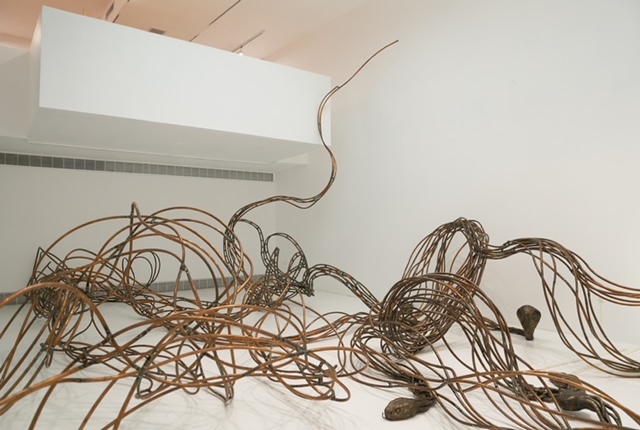 “Inyoka Yobhedu,” Nicholas Hlobo, 2021, photo by Eyal Agivayev, courtesy of CCA Tel Aviv.
“Inyoka Yobhedu,” Nicholas Hlobo, 2021, photo by Eyal Agivayev, courtesy of CCA Tel Aviv.
So, too, does “Inyoka Yobhedu” stand at paradoxical and parallel historical and cultural crossroads, promising to transform their contradictions into a new, generative identity, somewhere between material creation and spiritual inspiration.







